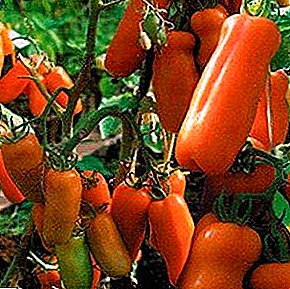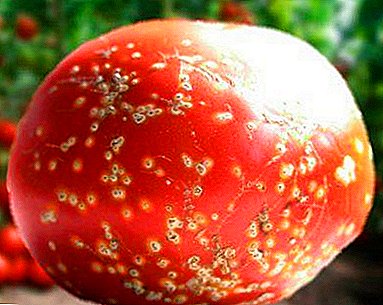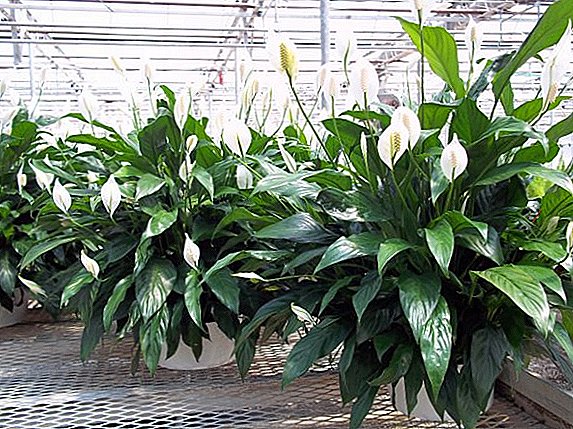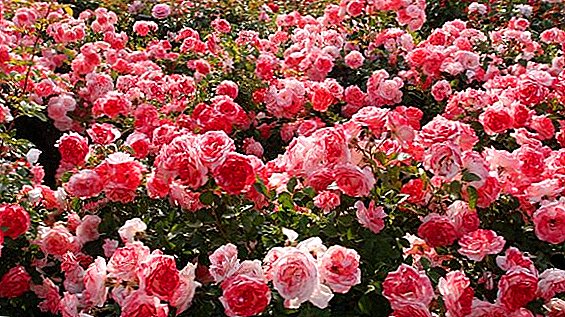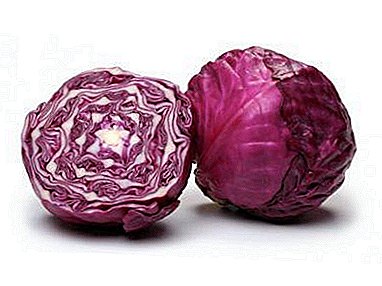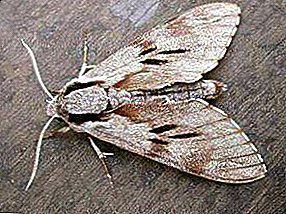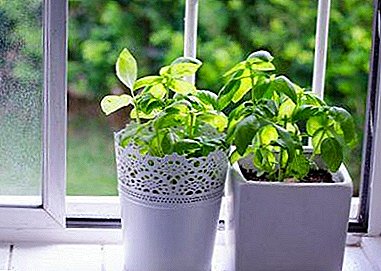
If you have ever grown basil on the plot, you probably would like this spice to be available all year round, and not in dried form, but fresh. Perhaps you even sowed basil in pots, but the seedlings quickly died.
What you need to do to get juicy, fragrant greens in the winter months, grown on the windowsill? How to plant basil and whether it is possible to grow a good crop from seeds at home? You will find answers to these questions in our article. And also we will tell about what needs to be done after harvesting and what diseases and pests can attack basil.
What varieties are best for growing at home on the window?
It is better to choose undersized varieties with small leaves. Large-leaf varieties consume more micronutrients, and at home it will be difficult to fertilize in sufficient quantities. Perfectly suitable for window sills of Baku, Yerevan, Lozhkovidny, Carnation aroma, Marquis, Vanilla aroma, Basilisk, Aniseed gourmet, Mint gourmet, Compatto, Freshness.
How to plant at home?
- Selection and preparation of the pot. When choosing a container for planting basil, please note that this culture does not tolerate crowding. Take a pot of 1.5-2 liters, or a spacious container with a depth of at least 15 cm, and preferably 20-30 cm.
There should be drainage holes in the pot or container, as the plant does not like stagnant moisture.
- Ground selection and preparation. The soil should be loose, light and fertile. The most convenient way is to take the soil from the garden plot and feed it with mineral fertilizers before planting. You can also buy a universal soil for indoor plants and mix it with garden soil in equal proportions.
Another option is to connect humus with peat or coconut fiber (1: 2). Before sowing the seeds, calcine the earth in the oven (100-120 ° C for one hour) to kill pests and pathogens.
- The choice of window sill. We grow basil on windows that face the south, because the spice loves bright and long-lasting lighting.
Sowing procedure in the apartment - step by step instructions
Seeds
The best time to plant basil is March-April, and some gardeners prefer the end of February. If you wish, you can sow basil at any time of the year. So that the seeds have risen faster, soak them in warm water for 1-2 days. Change the water at least twice a day. Then soak the seeds for 2 hours in a light pink solution of potassium permanganate and place on gauze or napkin to dry.
Growing spice from seed has the following algorithm:
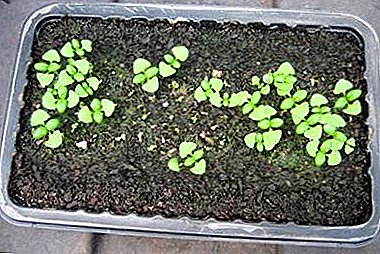 At the bottom of the container you need to put a drainage layer of broken brick, expanded clay or pebbles about 3 cm thick. From above, empty the prepared soil, leaving 3-4 cm to the edges of the tank, level the ground and pour it well.
At the bottom of the container you need to put a drainage layer of broken brick, expanded clay or pebbles about 3 cm thick. From above, empty the prepared soil, leaving 3-4 cm to the edges of the tank, level the ground and pour it well.- Spread the seeds on the surface of the soil at a distance of about 2 cm from each other, departing from the edges of the container by about 5-7 cm. In one flower pot you can grow up to three plants.
- Pour a layer of soil about 1.5-2 cm over the seeds. You can also put seeds into the wells about 1.5 cm deep and sprinkle with earth. The depth of the hole may be less, about 0.5 mm, but in this case you need to create a hill above it.
- Then cover the container with a transparent bag or cling film and place in a warm place (20-25 C). Seeds will sprout in 1-2 weeks.
- Before the emergence of shoots, it is necessary from time to time to open the film for a short time in order to air the greenhouse. It is not necessary to irrigate crops, you can only slightly spray them with a spray gun about once every two days. When shoots appear, remove the film and thin the crops, so that the distance between the remaining shoots is at least 10 cm.
- When they reach a height of about 6 cm, add soil to the container so that the shoots do not break.
- After the emergence of seedlings, basil should be watered daily in the summer or 2 times a week in winter. Maintain a temperature in the range of 20-25 C, avoiding drafts. In winter, when it gets dark early, use fluorescent lamps, and on particularly cold days - halogen lamps.
When the bushes reach a height of 5 cm, begin to loosen the soil every few days. If basil does not grow well, feed it with universal organic fertilizers. once every 2 weeks. After about a month and a half, you can start cutting off the top leaves.
When the three tiers of real leaves appear, some gardeners are advised to cut the top off with scissors so that the bush begins to grow in breadth. It is believed that this procedure can damage the plant, so it is better not to perform it immediately on all the shoots. Separate leaves, for example, for salad, also cut with scissors.
Do not allow flowering and remove flower stalks as soon as you notice them.
Another interesting way to grow basil seeds:
Cuttings
Cut off the sprout of basil about 10 cm long (you can use purchased greens), put it in a jar of water and wait for the roots to appear - it will take about 10 days. Plant the stalk in the pot. The soil and the pot are prepared the same way as for sowing seeds. First harvest can be taken in a few weeks.
Learn more about how to grow basil by cuttings described in this video:
Adults rooted bush
Dig a young bush on a garden plot that has not yet bloomed, along with a lump of earth, and plant it in a pot. Soon flower stalks should be formed, they must be cut off.
Seedlings
Basil can be sown immediately to a permanent place, or it can be grown from seedlings. Prepare the soil and seeds as described above, pour the earth into plastic containers and sow 2-3 seeds per container. When the first true leaflets develop well, plant the seedlings in separate plastic cups, deepening them to the cotyledon leaves.
What to do after harvesting?
Cut the leaves, well water and feed the plants, as they need strength to recover.
Diseases and pests
 Even outdoors, basil is resistant to diseases and pests. At home, snails and slugs, which sometimes hit garden greens, will not attack him.
Even outdoors, basil is resistant to diseases and pests. At home, snails and slugs, which sometimes hit garden greens, will not attack him.
In some cases, the plants on the windowsill may suffer from gray mold - a grayish bloom appears on the leaves or on the soil. Having sustained the seeds in potassium permanganate and calcined the soil before planting, you have already reduced this probability, and if you maintain the right temperature, do not re-moisten the soil and indoor air, then the disease has almost no chance.
If you still notice its signs, remove the affected bushes along with a clod of earth and remove the soil on which mold is visible. For three days, do not water or feed the plants in this pot, then, if the disease has not returned, continue to care for the plantings as usual.
As you can see, it is quite possible to grow basil on the windowsill. If you need a quick result, plant mature plants or root several cuttings. If you want to get strong shoots that will produce a crop for many months, grow basil from seeds. In any case, feel free to get to work. And let her result pleases you all year round!


 At the bottom of the container you need to put a drainage layer of broken brick, expanded clay or pebbles about 3 cm thick. From above, empty the prepared soil, leaving 3-4 cm to the edges of the tank, level the ground and pour it well.
At the bottom of the container you need to put a drainage layer of broken brick, expanded clay or pebbles about 3 cm thick. From above, empty the prepared soil, leaving 3-4 cm to the edges of the tank, level the ground and pour it well.